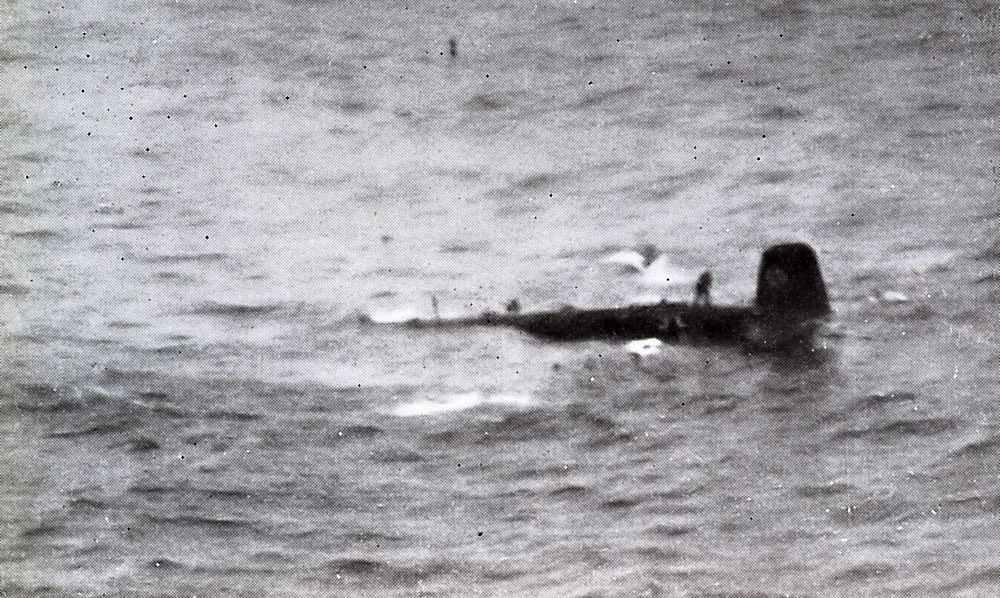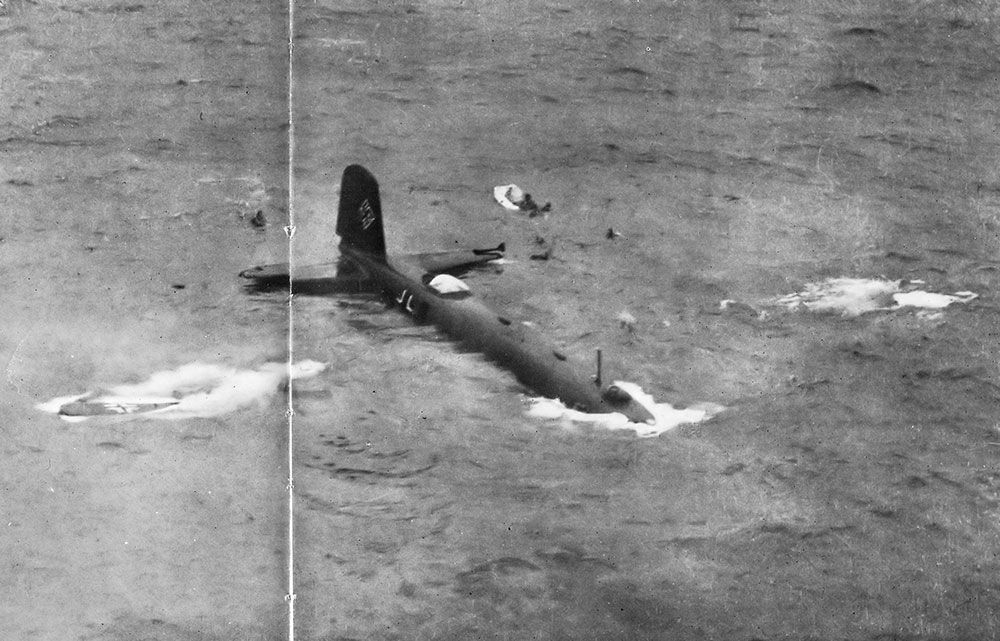Part 82.
8. Condor Written Off
A Focke-Wulf Condor, on the way to attack Atlantic convoys, was intercepted to-day by a Lockheed Hudson of the R.A.F. Coastal Command ... (Air Ministry Bulletin.)
THE Focke-Wulf which we disposed of is by no means the first one to have been shot down in the Battle of the Atlantic. But this time it happens to have been written off by one of the Hudson squadrons which are now in action day and night over the wide battlefield of the Western Ocean.
My crew and I have been on the job of escorting and pro�tecting convoys in the Atlantic for months past. It's largely monotonous work, helping to keep the shipping lanes safe�arduous and unspectacular work which has to be done mostly in wretched weather conditions so far as visibility is concerned.
It is work that doesn't often come into the news. It's a real case of no news being good news. While the convoys are going through safely without molestation from the air or from surface raiders and U-boats, there is no news. All is well. But my crew and I were longing for some liveliness. The other day we got a real packet of it.
It happened like this. Away out in the Atlantic, hours after dawn, we made our rendezvous with the convoy and the escorting warships. We did our usual stuff over them for more than a couple of hours, circling round and round in wide sweeps looking for possible danger. There wasn't a sign of anything in the air or on the sea. My relief was well on the way out and my fuel was getting a bit low, so I signalled �Good-bye and good luck" to the convoy.
I was just setting course for home when something�I don't know what�told me to have a final look round. So I made another wide circuit of the ships. I was half-way round when one of the escorting warships spelt out a signal to me with its lamp. The message read, �Suspicious aircraft to starboard."
We flew on for a bit and sighted an aircraft about four miles away. It was flying very low, just above the sea, and on a steady course towards the convoy, taking good advan�tage of the very low cloud over the Atlantic. It was just a dot at first�but obviously a big fellow. I went on to have a look at him. Just as a precaution, I pulled down my front gun sights, and mentioned to my co-pilot that I had the stranger beautifully in my sights.
He suddenly let out an Irish yell. �Hi! It�s a blinking Condor!� he cried.
He was jolly well right, too. It was a Focke-Wulf Condor painted sea-green as camouflage. The big German was going straight for the convoy and was now only two miles from it.
The second pilot ran back to man the side gun of the Hudson. I went all out on the throttle and at 1,100 feet began to dive. Four hundred yards away I was wondering who would fire first. At that moment the German and I began firing simultaneously, but my front guns didn't seem to be doing him any damage.
The enemy's shooting was bad. Not one of his bullets or cannon shells hit us then or afterwards.
I brought my Hudson still lower and got into position 200 yards away to give my rear gunner a chance. He took it beautifully and promptly. I could see the tracer bullets from his tail gun whipping into the Focke-Wulf's two port engines and into its fuselage about mid-wing.
We got closer still�actually to between 20 and 30 feet�so close that the Focke-Wulf looked like a house. All the time my tail-gunner's tracers were still ripping into the Jerry. When there was only 8 yards between us we saw a gun poked out from a window of the Focke-Wulf. A face appeared above it, but it wasn't there long. The second pilot saw the face and spoiled it with a burst from one of his side guns.
By this time two of the four engines of the Focke-Wulf were in a glow. The German turned. As he did so he showed us his belly. My tail and side guns absolutely raked it.
I made a tight turn the other way. When the Hudson came out of it, I saw the German about a mile away still flying apparently all right. We know that these big Focke-Wulfs are built to give and take heavy punishment. But I was amazed that this fellow could still fly at all after the hiding we had given him.
I set off after him again, but the chase didn't last long. The Focke-Wulf soon crashed into the sea. It pancaked on the water, and we could see five members of its crew swimming from the wreckage and another one scampering along the fuselage.
We went round them a few times until we saw the six survivors hanging on to a rubber dinghy. The last we heard was that they were picked up by one of our warships.
We had a last look at the convoy. Every man on board the warships and merchant vessels, from captains to cooks, seemed to be on deck, waving and signalling their thanks for the grandstand view of the end of another Focke-Wulf.
My relief was now in sight and so I made for home.
Two pics of the same Condor in the Atlantic:

